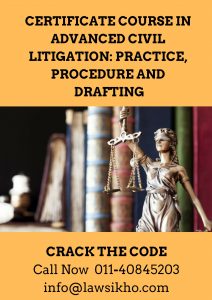This article is written by Sachi Ashok Bhiwgade, B.A.LLB (Hons.) student of Hidayatullah National Law University, Raipur. This article discusses the history, objectives, principal organs and the purposes and principles of the United Nations.
Introduction
“In many respects, the world is shifting beneath our feet. Yet the Charter remains a firm foundation for shared progress.”
-Ban Ki-Moon
In 1945, after the event of World War II causing irreparable damage to many nations of the world, it was a time where the world wanted peace. In the same year, 51 countries met at a conference held in San Francisco to sign a document which was the United Nations Charter founding the United Nations Organization (UNO). The United Nations Organization headquartered in San Francisco was created for the purpose of maintaining international peace and security. Presently, there are 193 member states in the UNO.
History of the United Nation
The Atlantic Charter (1941)
After the failure of the League of Nations and when World War II started, a dire need for a new organization for promoting international peace was felt. The Atlantic Charter was a Joint Declaration issued by two leaders American President Roosevelt and British Prime Minister Churchill in 1941. Initially, the word ‘United Nations’ was used by President Roosevelt and it indicated the countries that are allied against Germany, Japan, and Italy. On 1st January 1942, 26 nations signed the Declaration at Washington DC stressing their adherence to the principles of the Atlantic Charter.
Dumbarton Oaks Proposal (1944-1945)
A meeting was held at Dumbarton Oaks for the formation of the United Nations, where the principles of the organization were laid down. On 7th October 1944, a proposal was submitted by the Big Four (China, Great Britain, USSR, and the United States) regarding the structure of the world organization to all the UN Governments. But, there was still disagreement on the question of voting in the Security Council. For this purpose, Roosevelt, Churchill, and Stalin met at a conference at Yalta and on 11th February 1945 announced that the question was resolved and summoned the San Francisco Conference.
On the 25th of April 1945, the leaders gathered at the San Francisco Conference (United Nations Conference on International Organization) to determine the final structure of the United Nations Charter. On 24th October 1945, the 5 permanent members and other signatory nations ratified the official UN Charter.
Principal organs of the United Nations
The united nations have six principal organs that were established when the United Nations was founded. The Principal organs are:
General Assembly
The United Nations General Assembly (UNGA) is headquartered in New York and all the member states of the United Nations have equal representation. The member states gather to discuss various issues relating to international law, security, peace, etc
Security Council
The Security Council has the responsibility to maintain international peace and security whenever peace is threatened. It constitutes 15 members, having one vote each and a residency rotating and changing every month.
Economic and Social Council (ECOSOC)
The ECOSOC promotes sustainable development with regard to economic, social and environmental matters. It comprises of 54 members that are elected by the General Assembly.
Trusteeship Council
the Trusteeship Council is dealt with under Chapter XII of the UN Charter. It was established in order to supervise the 11 Trust Territories that were placed under the administration of 7 member states. The Council suspended its activities in the year 1994. All territories are now independent.
The International Court of Justice (ICJ)
The International Court of Justice (also called the world’s court) established by the United Nations Charter in the year 1945. The ICJ is the principal judicial organ of the United Nations having its headquarters at Hague, Netherland being the only organ among the six organs of the UN to be not situated in New York (USA). It consists of a panel of 15 judges for a term of nine years. The judges are elected by the General Assembly and the Security Council. ICJ succeeded the Permanent Court of International Justice. It resolves disputes between the member states of the UN.
United Nations Secretariat
The UN Secretariat comprises of a Secretary-General who is appointed by the General Assembly on the Security Council’s recommendation. Other members of the Secretariat are appointed by the Secretary-General as per the regulations of the General Assembly. The Secretariat carries out the day to day work of the UN such as preparing the report, making analysis, research, etc that the General Assembly and other principal organs have mandated.
The United Nations Charter
While drafting the Charter of the United Nations, the experiences and practices of the League of Nations were mostly relied upon. The UN Charter is a document that sets forth the principles to be followed by the organization and its members.
Purposes and Principle
Chapter I of the Charter lays down the purposes and principles of the United Nations.
Article 1 of the UN Charter
Article 1 of the 1 UN Charter talks about the purposes of the United Nations. They are:
- Maintaining international peace and security;
- Developing friendly relations amongst the nations;
- Achieving international cooperation to solve international issues of social, economic, cultural or humanitarian nature;
- Being a centre to harmonize the actions of the state to accomplish these common goals.
The main objective of these purposes was binding the organization and its members to coordinate their activities in order to accomplish these common goals.
Article 2 of the UN Charter
Article 2 talks about the principles of the United Nations. These principles are:
- Ensuring sovereign equality of all its members. This rule implies that all the members of the UN have equal representation.
- All the members of the UN are required to fulfil in good faith the obligations assumed by them in accordance with the Charter.
- All the members of the UN are obliged to settle their disputes by peaceful and amicable means in such a manner as to not endanger or jeopardize international peace, security, and justice.
- All the members of the UN are required to desist from giving treats or using force over and against any states’ territorial integrity or political independence.
- All the members of the UN are required to abstain from helping or assisting any state against which the UN is taking preventive actions or enforcement actions.
- Ensuring that non-members do not act inconsistently with the Charter. This rule empowers the United Nations in order to maintain peace and security to enforce obligation in the non-members of the state. Further, a non-member state as per Article 35(2) is empowered to bring any dispute before the General Assembly or the Security Council.
- Non-interference of the United Nations in matters relating to the domestic jurisdiction of any state. This rule mandates the United Nations not to interfere where the matter is solely of domestic jurisdiction of a state.
Nicaragua v. the United States
In this case, Nicaragua alleged that the United States carried illegal military and paramilitary operations against Nicaragua by supporting and assisting the Contras causing an extensive loss of lives by attacking its mining ports, naval base, air space, etc. It was also alleged that certain attacks were done not by the Contras but by the United States itself.
The claims of Nicaragua was that
- the United States has violated Article 2(4) of the Charter of the United Nations to ‘refrain from threat and use of force’ and has breached the customary international law obligation.
- The actions of the United States amounted to an interference with the internal affairs of Nicaragua.
The ICJ, in this case, held that the United States has violated international law by involving itself in the unlawful use of force against Nicaragua.
Article 51 of the UN Charter: Maintenance of peace
Article 51 empowers the United Nations Security Councils to take measures regarding the maintenance of peace and security. Article 51 provides that the member states have an inherent right of self-defence (individually or collectively) to defend any armed attack against a member of the UN. A member state has to immediately report to the Security Council if it has taken any measures for the exercise of its self-defence.
It further provides that the Security Council’s authority and responsibility can not be affected to take any action that is necessary for the restoration and maintenance of international peace and security.
Article 13(1) of the UN Charter
Article 13(1) empowers the General Assembly to initiate studies and make recommendations to:
- Promote international cooperation in the political, social, cultural, educational, economic, and health fields.
- Encourage progressive development of international law and codification of international laws.
- Assist in the realization of Human Rights and fundamental freedom for all.
- Non-discrimination on the basis of race, sex, language, religion.
Article 24, 25 and 26 of the UN Charter
Chapter V of the UN Charter deals with the functions and power of the Security Council under Article 24 and 25 of the Charter.
Article 24 states that:
- The members of the United Nations confers a primary responsibility upon the Security Council of maintaining peace and security for ensuring a prompt and effective action by the UN.
- The Security Council while discharging these duties is obliged to act in accordance with the purpose and principles of the UN.
- The Security Council is required to submit to the General Assembly the annual and special report for its consideration.
Article 25 makes the members of the United Nations accept and carry out the decisions of the Security Council in accordance with the Charter”.
Under Article 26 the Security Council with the aid and assistance of the Military Staff Committee is responsible to formulate plans that are to be submitted to the members for establishing a system for regulation of armaments. Further, the security council is required to do so with the slightest diversion for armaments of human and economic resources of the world.
United Nations General Assembly resolutions (UNGA)
All the members of the United Nations are required to vote on a resolution relating to issues of poverty, development, peace, and security, etc in the General Assembly of the United Nations. Generally, a simple majority vote (50%+1) is required. In case if the General Assembly is of the view that a certain issue is an important question (pertaining to matters of international peace and security) then it requires a 2/3rd majority. Some important resolutions of the General Assembly:
Resolution 3314: Definition of Aggression
The UNGA on 14th December 1974 adopted this resolution which provided for the definition of aggression. The definition as per Article 1 states that “ aggression is the use of armed force by a State against the sovereignty, territorial integrity or political independence of another State, or in any other manner inconsistent with the Charter of the United Nations”
Resolution 31/72: Environmental Modification Convention (ENMOD)
The Convention bars the use of military or other environmental modification techniques that have destructive, long-lasting or severe effects. The definition of Environment Modification Techniques as provided under the treaty is “any technique for changing- through the deliberate manipulation of natural processes- the dynamics, composition or structure of the Earth, including its biota, lithosphere, hydrosphere, and atmosphere, or of outer space.”
Resolution 194: Right of return for Palestinian refugees
The UNGA on 11 December 1948 adopted this resolution after the Arab-Israeli war of 1948 regarding the return of the Palestinian refugees. Article 11 of the resolution permitted the return of those refugees who wished to return to their homes and live at peace with their neighbours at the earliest practicable date. It also provided the Government or the authorities responsible should make payment of compensation to those who chose not to return for the loss or damage of property.
Conclusion
The United Nations was formed with the motive to find ways to maintain worldwide peace. Since its inception, it has been helping nations deal with the economics, social and humanitarian issues, protecting refugees promoting sustainable development and more.
References
- https://www.un.org/en/about-un/
- https://www.un.org/en/ccoi/page/what-we-do-0
- https://www.icj-cij.org/en/court
- https://www.un.org/securitycouncil/content/purposes-and-principles-un-chapter-i-un-charter
To know more about the UDHR, please Click Here.
LawSikho has created a telegram group for exchanging legal knowledge, referrals and various opportunities. You can click on this link and join: https://t.me/joinchat/J_0YrBa4IBSHdpuTfQO_sA
The post History, Objectives & Principles of the United Nations appeared first on iPleaders.









